Die Fennek of Woestynjakkals, or the Fennek or Desert Jackal, is the second story in die babadiertjies van Afrika, baby animals from Africa series, and for your reward you can also read The Jackal and the Lion, a Khoisan folktale, down below.
Die Fennek of Woestynjakkals, babadiertjies van Afrika
Hierdie woestynjakkalse is wilde diere, maar hulle maak steeds vriende met die honde van die Arabiere wat in die woestyn woon. Nogtans word woestynjakkalse nooit heeltemal mak nie, en raak hulle ook nooit ontslae van hulle sluwe, agterdogtige natuur nie. Die geringste verdagte geluidjie laat hulle halsoorkop op die vlug slaan.
Vir die jong jakkalsie is dit van die allergrootste belang dat hy baie gou vyande soos gevaarlike insekte, skerpioene en dies meer moet kan uitken en vermy. Dan moet daar ook aan hom geleer word hoe om ‘n grondverskuiwing te laat plaasvind. Dit is baie belangrik dat hy moet weet hoe om sy eie grondtonnel blitsvinning te laat intuimel as die een af ander giftige slang of ongedierte hom probeer volg.
Om in die barre woestyn te kan bly voortbestaan, moet hierdie dier feitlik alles eet. So bestaan sy dieet uit klein knaagdiertjies, insekte, voëltjies en selfs voëleiers as hy dit in die hande kan kry.
Water is skaars, en daarom leer die klein jakkalsie baie gou dat hy die bloed van sy liggaam te verskaf.
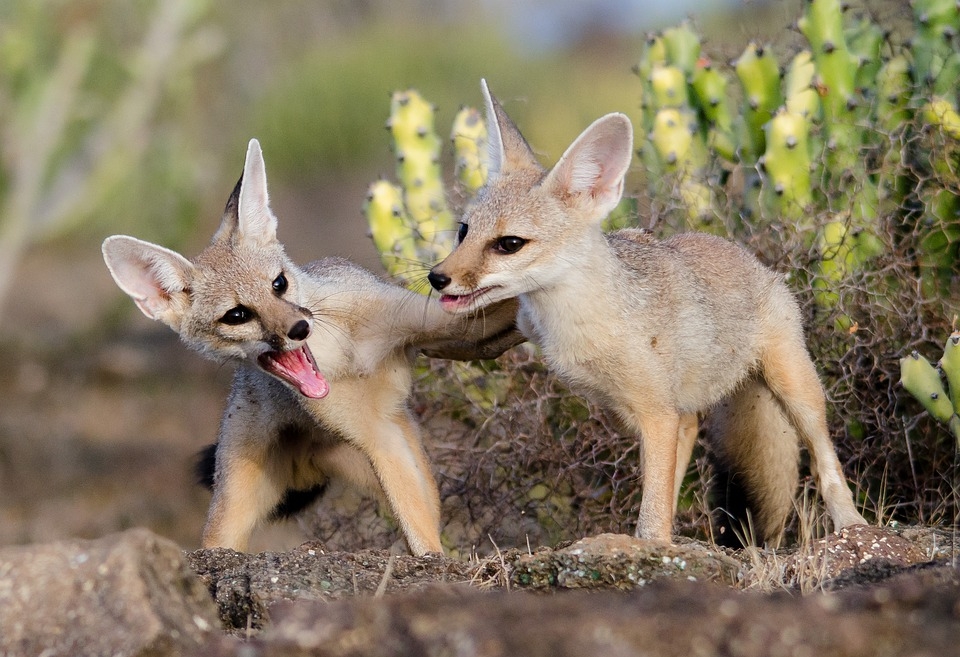
As hy eers volgroeid is, staan die woestynjakkals ongeveer veertig sentimeter hoog. Sy pels is dik en het ‘n goudbruin kleur. Sy ore is spits en hy het twee donker vlekke naby sy oë.
Hierdie diere is nagadiere. Soms sal die klein jakkalsies, terwyl hulle wag dat hulle ouers vir die jag gereed moeet maak, heerlik saam vir die maan sit en tjank. Vir alle ander jakkalse in die omgewing is dit dan die teken om by die jagparty te kom aansluit.
Die woestynjakkals, of fennek, word heel selde buite Afrika aangetref. Vroeër jare is hulle gevang en na dieretuine oorgeplaas, maar hulle het nog selde die koue oorleef. Hulle treur hulle letterlik dood or die warm, sonnige woestynwêreld waar hulle vandaan kom.
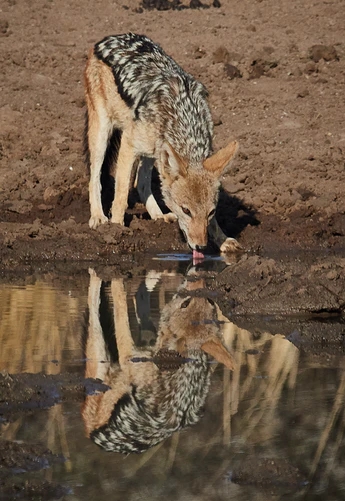
The Fennec or Desert Jackal, baby animals from Africa
The fennec or the desert jackals are wild animals, but they still make friends with the dogs of the Arabs who live in the desert. Yet desert foxes never get completely tamed, nor do they ever lose their cunning, suspicious nature. At the slightest strange sound they get spooked and make a run for it.
For the young Fennec it is of utmost importance that he learns from a very young age how to identify and avoid his enemies, such as dangerous insects, scorpions and the like. Then he must also be taught how to cause a landslide… This skill is very important during his defense, as desert jackals hide in underground tunnels if a poisonous snake or vermin attempts to follow him.
In order to survive in the barren desert, the Fennec has adapted by eating virtually everything. So his diet consists of small rodents, insects, birds and even bird eggs if he can get his paws on them.
Water is scarce here, therefore the little fox learned quickly to make use of any resources that will increase the liquids his body needs.
Once fully grown, the desert fox stands about forty centimeters high. Its fur is thick and has a golden brown color. His ears are pointy and he has two dark spots near his eyes.
These animals are rodents. Sometimes the baby desert jackal, while waiting for their parents to get ready for the hunt, will sit and howl together at the moon. This is the sign to join the hunting party and all the other foxes in the area know it.
The desert fox, or Fennec, is rarely found outside Africa. In earlier years many were captured and transferred to zoos around the world, yet they rarely survived the cold weather. In the zoos the Fennec literally feels homesick, missing his African lifestyle and the warm, sunny desert world he come from.
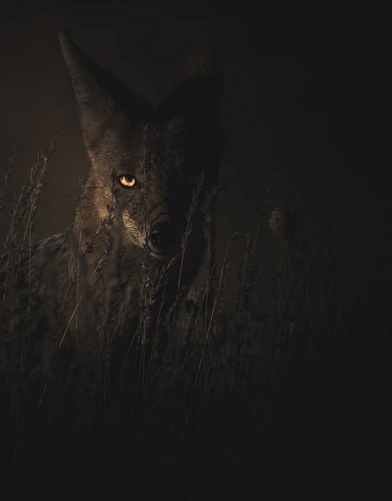
The Jackal and the Lion, a Story from the Khoisan Folklore
Once upon a time, long ago, when humans still foraged for food, Jackal was scurrying through a narrow, rocky pass in the Omatako Mountains, today’s Namibia.
He was half laughing at himself over how silly humans were to give this mountain such a hilarious name, for its two tops, looking like buttocks, gave way to its name, Omatako Mountains. Snickering and sniffing Jackal was, trying to find something juicy to eat, perhaps caught underneath a rock or burried shallow, to fill his growling stomach and quench his thirst. When his eye suddenly caught some movement ahead of him, in the pass.
Something that shouldn’t have been there.
Jackal froze in his tracks. And swallowed hard, his tail already tucked between his hind legs. The mighty Lion, his mane glowing under the setting sun, was coming straight toward him. Had Lion gotten bigger since I last saw him? thought Jackal to himself.
Out of the corner of his eye Jackal looked left, then right. There was no way of escape! And his hind legs trembled a little. Jackal cursed his streched muscles, not allowing his fright to steal into his mind. But a claw clutched at his heart already.
Alas! He’d lost count of all the tricks he’d played on the king of animals over the years… Was this it? Will he pay today, of all the days? Will Lion prove to be just a beast and use this sudden encounter to get his revenge?
A breeze tickeled Jackal’s nose, carrying with it the scent of open planes, of the Namib desert. Of freedom. That Jackal loved above everything else. So he thought of a plan.
His tail left its place of safety and swiped the dirt behind its feet, sending it up the cliff. When it rolled down, Jackal howeld.
‘Help! Help!’ cried Jackal and crowched, half crawling half sliding down the cliff, looking back at every other step.
Lion stopped, an eyebrow lifted. Annoyance? Surprise?
‘Help!’ Jackal yelled again and looked over his shoulder at the boulders piling high. ‘The rocks are about to tumble over and crush us. Oh, great Lion, I am but a mere wild dog, but you, the king of animals, with your great strengh, you can save us! And all beasts will learn of your bravery and praise you.’
Then he looked back again and yelped for help again, covering his head with his paws.
On hearing this and seeing how destraught Jackal was, Jackal who was always laughing and joking, Lion looked up at the towering rocks, feeling most alarmed. But pretending he is as cool as ever.
‘Oh, great Lion, put your shoulder to the rock and prevent the mountain from tumbeling over, for only you can do it,’ yelped Jackal further.
So Lion, without giving it a second thought, put his strong shoulder against the rock. To heave and stop the mountain from rolling over.
‘Oh, great king, thank you!’ yelped Jackal, ‘for you have saved us. Let me fetch that spear over there and we will use it to prop the mountain.’
And with that he sprang out of sight.
Lion waited and waited, shouldering the mountain and trying his best to chase away the flies, but he had only his tail as a weapon. All the time listening, waiting to hear Jackal’s footsteps.
When the last rays of the setting sun became blunt and their heat turned to a gentle embrace, Lion felt as if the weight of the mountain was resting on his shoulders. So much so that his hind legs were trembling and heat grew inside his chest, ready to erupt in his throat.
While Jackal was already reunited with his folk, all laughing and admiring his cunningness and bravery.
Now in Afrikaans: Drie populêre kinderboeke, nou beskibaar in Afrikaans. Helder en kleurvolle illustrasies en beminlike karakters wat opwindende avonture deel. Vir kinders en ouers om saam te geniet.
Die Leeu en die Hond
Die Olifant en die Skaap
Die Jagluiperd en die Hond
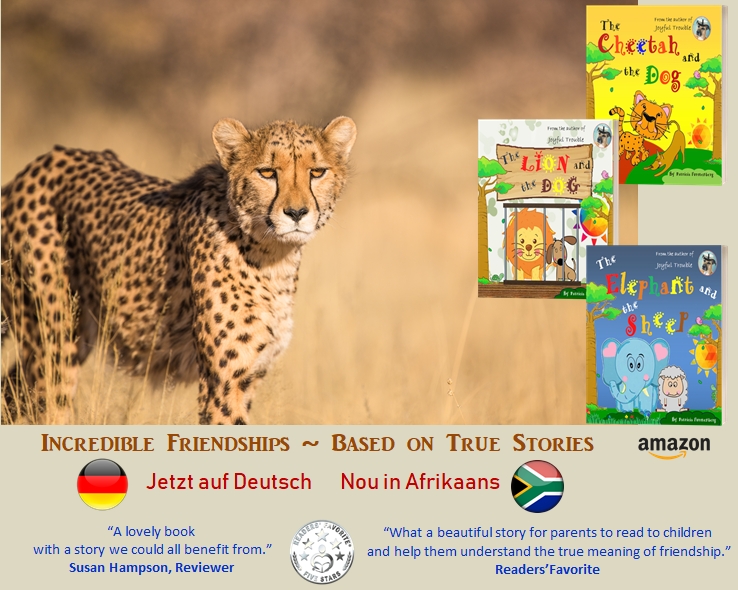
I hope you enjoyes die Fennek of Woestynjakkals, the Fennec or Desert Jackal from babadiertjies van Afrika, animal cubs from Africa series.
Did you know? In South Africa the The Cape fox (Vulpes chama) is called an asse, cama fox or the silver-backed fox. It is a small fox-like animals, native to southern Africa. It is also called a South African version of a fennec fox due to its big ears.
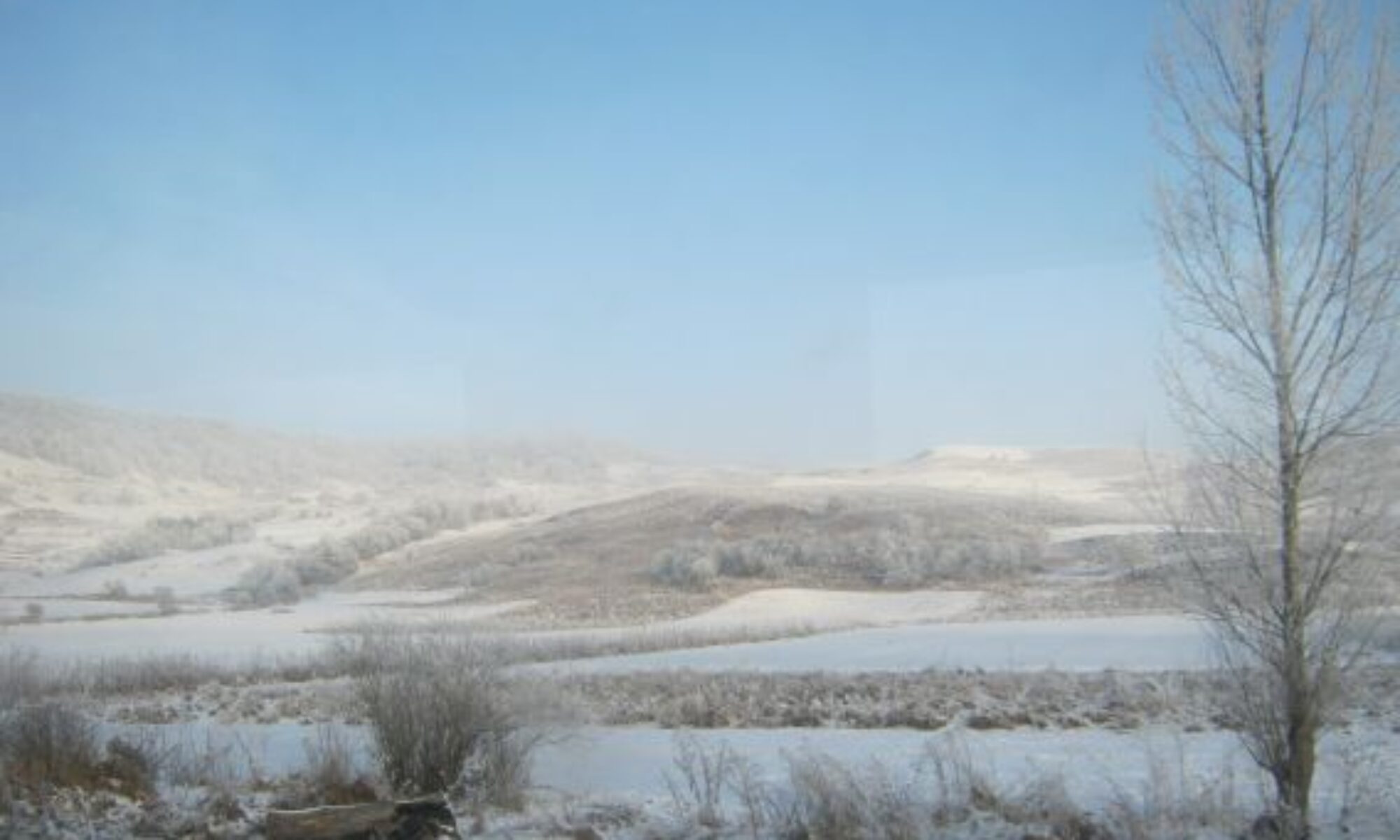
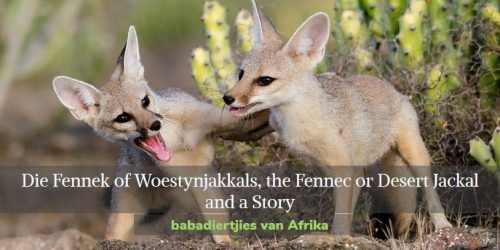
This sounds lovely, Patricia. Do you have any books that are suitable for second language Afrikaans kids in junior high school?
Thank you, Roberta. I learned a few new things too 🙂
Sorry, but my three books translated to Afrikaans are picture books. My children borrowed books from the school’s library, apart from my husband’s collection and the Afrikaans novel done during class. Not this year though. I see how the Covid 19 situation can be a problem.
But have a look around online. Perhaps an Afrikaans edition of Harry Potter?
I learned so much about the desert jackal. They’re quite big at 40 inches !
Ah, Priscilla, mea culpa. It is forty centimeters 🙂
But those pups are so cute!